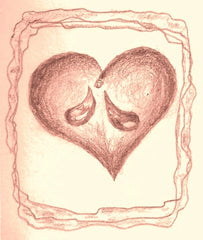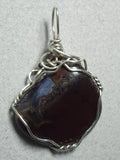Somewhere, Somebody Loves that Boy

There were only a few, popular boys,
With whom the other children laughed,
And played, and talked.
They were what other boys wished to be.
And one of those boys, who wished, was me.
They were smart; and they were cool.
They were the important ones at school.
My chance to be popular finally came.
They asked me to join them in one of their games.
I came in great haste to join in their fun.
And was filled with joy to have finally won,
The thing I most wanted, popularity.
Now I was proud; I was smart; I was cool.
So when Johnny walked by, I broke my first rule.
I was taught to be good, kind, never mean,
But the popular boys didn't do those things.
So we laughed at Johnny and made fun of his clothes.
We pushed him, mocked him and brought him down low.
It was really no harm, just part of the fun.
Johnny was nobody; he was no one.
I walked home from school, quite proud of myself.
I was popular now, not put down on a shelf.
But inside, a needle pricked at my heart.
My conscience dug in and took from me, a small part.
I was sorry, a little, to have made Johnny cry.
But I was popular now and I didn't care why.
At night when I went to my knees to pray;
A voice from within me began to say:
"You may not care how Johnny feels,
For the wounds, in his heart, that he conceals
But somewhere, somebody loves that boy,
And somewhere, somebody's proud of him.
Somewhere he fills someone's heart with joy.
Somewhere, he too has family and friends.
Yes, somewhere, somebody loves that boy,
And sees the best in him."
The words went away; but my mind never slept.
My heart swelled up big in my soul and I wept.
I was truly sorry for what I had done.
But the sorrows I had now, had just begun.
I tossed and turned in my bed that night,
And wondered, if ever, I could make things right.
When I walked down the road to school the next day,
I saw hurt and broken Johnny along my way.
I quickened toward him; my sorrows to say;
But as I drew closer, he hurried away.
My heart gave a leap, then fell back in my chest.
It hurt me inside, though I had tried my best.
At recess, when the popular boys asked me to play,
I just shrugged my shoulders and walked away.
I went and found Johnny, by himself, all alone,
Tears on his cheeks, and his clothes worn and torn,
Then sitting beside him, "I'm sorry," I said.
He lifted up sharply, then again dropped his head.
He didn't say anything, nothing at all.
So I stepped up before him, stood straight and tall.
And looking upon him, "I'm sorry," I said.
Then his face made a smile and he lifted his head.
"Thank you," He said, from the smile that he wore.
"Nobody's said that to me, before."
So Johnny and I; we played on the swings,
While the popular boys, did other things.
They played with their trucks, and cars, and play guns.
And Johnny and I, we made our own fun.
We played in the mud and climbed in the trees.
And Johnny was happy, as I hoped he would be.
The popular boys then beckoned to me.
Come play with us, and leave Johnny be.
They bragged of their fun, of their games and their toys.
And said that I should come play with them.
But I couldn't be a popular boy,
'Cause unpopular Johnny is my best friend.
With whom the other children laughed,
And played, and talked.
They were what other boys wished to be.
And one of those boys, who wished, was me.
They were smart; and they were cool.
They were the important ones at school.
My chance to be popular finally came.
They asked me to join them in one of their games.
I came in great haste to join in their fun.
And was filled with joy to have finally won,
The thing I most wanted, popularity.
Now I was proud; I was smart; I was cool.
So when Johnny walked by, I broke my first rule.
I was taught to be good, kind, never mean,
But the popular boys didn't do those things.
So we laughed at Johnny and made fun of his clothes.
We pushed him, mocked him and brought him down low.
It was really no harm, just part of the fun.
Johnny was nobody; he was no one.
I walked home from school, quite proud of myself.
I was popular now, not put down on a shelf.
But inside, a needle pricked at my heart.
My conscience dug in and took from me, a small part.
I was sorry, a little, to have made Johnny cry.
But I was popular now and I didn't care why.
At night when I went to my knees to pray;
A voice from within me began to say:
"You may not care how Johnny feels,
For the wounds, in his heart, that he conceals
But somewhere, somebody loves that boy,
And somewhere, somebody's proud of him.
Somewhere he fills someone's heart with joy.
Somewhere, he too has family and friends.
Yes, somewhere, somebody loves that boy,
And sees the best in him."
The words went away; but my mind never slept.
My heart swelled up big in my soul and I wept.
I was truly sorry for what I had done.
But the sorrows I had now, had just begun.
I tossed and turned in my bed that night,
And wondered, if ever, I could make things right.
When I walked down the road to school the next day,
I saw hurt and broken Johnny along my way.
I quickened toward him; my sorrows to say;
But as I drew closer, he hurried away.
My heart gave a leap, then fell back in my chest.
It hurt me inside, though I had tried my best.
At recess, when the popular boys asked me to play,
I just shrugged my shoulders and walked away.
I went and found Johnny, by himself, all alone,
Tears on his cheeks, and his clothes worn and torn,
Then sitting beside him, "I'm sorry," I said.
He lifted up sharply, then again dropped his head.
He didn't say anything, nothing at all.
So I stepped up before him, stood straight and tall.
And looking upon him, "I'm sorry," I said.
Then his face made a smile and he lifted his head.
"Thank you," He said, from the smile that he wore.
"Nobody's said that to me, before."
So Johnny and I; we played on the swings,
While the popular boys, did other things.
They played with their trucks, and cars, and play guns.
And Johnny and I, we made our own fun.
We played in the mud and climbed in the trees.
And Johnny was happy, as I hoped he would be.
The popular boys then beckoned to me.
Come play with us, and leave Johnny be.
They bragged of their fun, of their games and their toys.
And said that I should come play with them.
But I couldn't be a popular boy,
'Cause unpopular Johnny is my best friend.

Find this story and many others in Wisdom's Way: Tales, Treasures, Truths - available at jemelww.com
Somewhere Somebody Loves That Boy is a poem excerpt from Wisdom's Way: Tales, Treasures, Truths
Copyright 2010 Steven A. Barben













